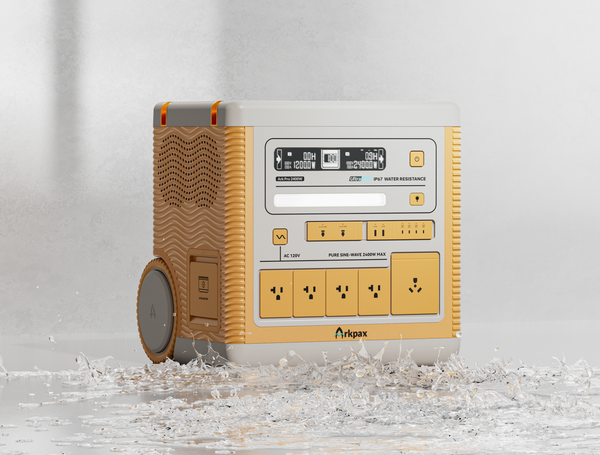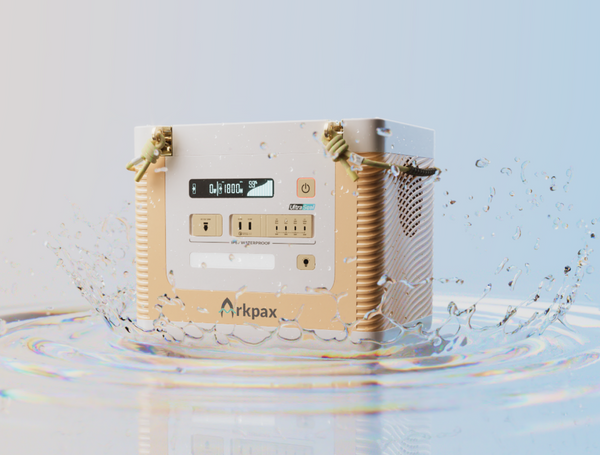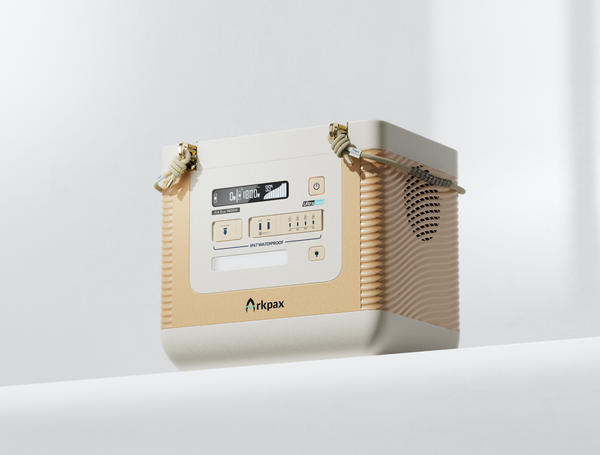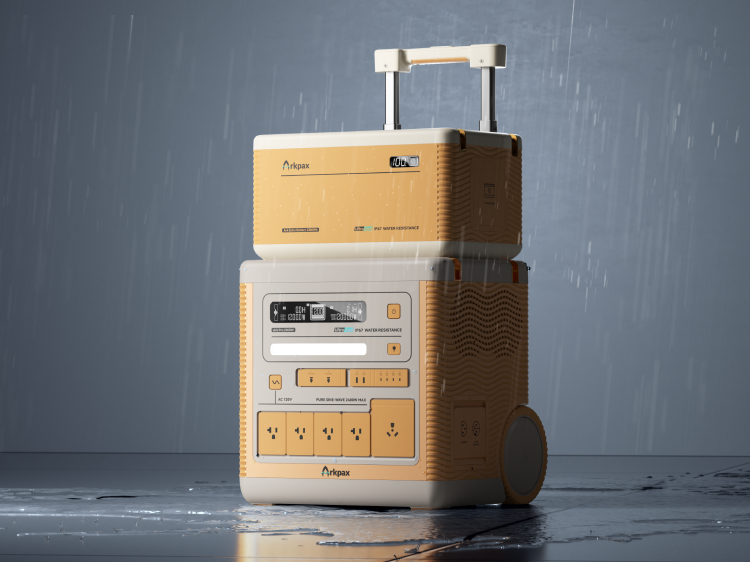Reimagine Jobsite Power with Smart Energy
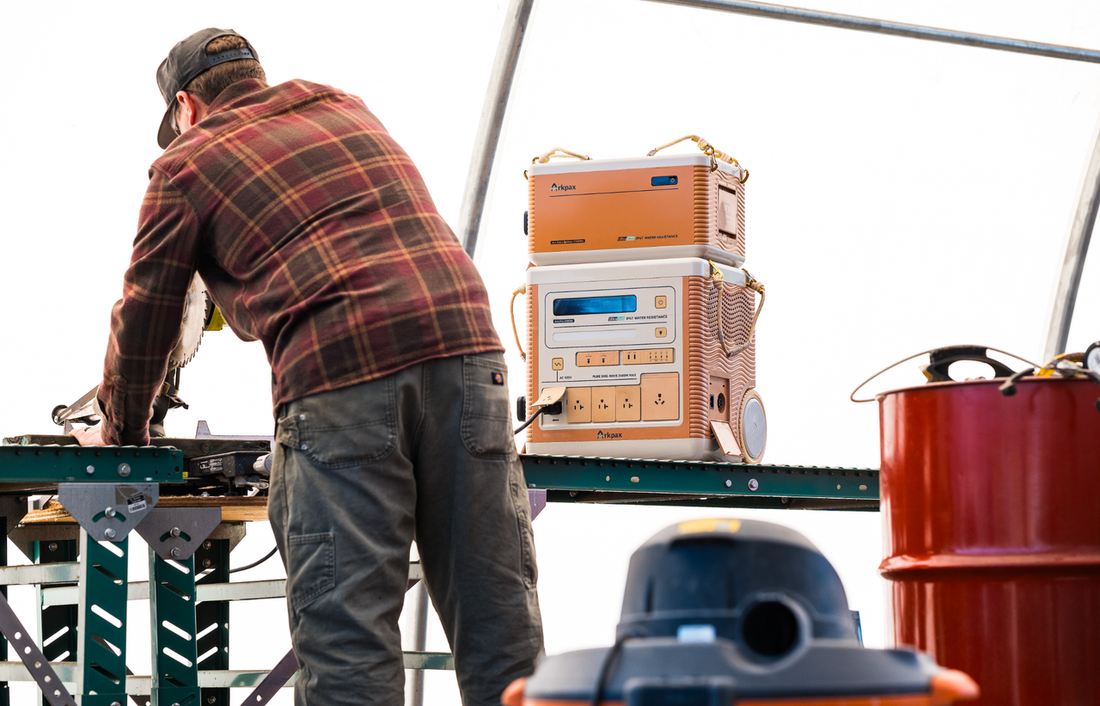
Why the Construction Industry Is Moving Toward Electrification
Across the global construction sector, the push for higher efficiency and lower emissions has made electrification more than just a buzzword—it’s becoming a business imperative. From evolving regulations to growing environmental expectations, construction sites are under increasing pressure to replace diesel-powered generators with cleaner, smarter, and more flexible energy solutions.Diesel has long been the go-to option due to its availability and reliable output. But this legacy system is showing its cracks:
- High emissions and air pollution – Diesel generators are major sources of CO₂, particulate matter (PM), and nitrogen oxides (NOx), all of which pose serious health risks to workers and nearby communities.
- Noise pollution – Constant noise from generators disrupts both urban neighborhoods and the workflow itself, particularly during night shifts.
- Unpredictable operating costs – Volatile fuel prices and transportation logistics introduce uncertainty into project budgeting and planning.
Around the world, governments are introducing stricter carbon and nitrogen emissions regulations targeting the construction industry. In some regions, soaring nitrogen levels have even forced major infrastructure projects to halt—what some refer to as a "nitrogen crisis." These policy shifts are fast-tracking the move away from diesel and incentivizing zero-emission, low-noise, and grid-independent solutions.As a result, portable battery systems, electric construction tools, solar integration, and hybrid power setups are becoming the new standard on modern job sites. Electrification isn’t just about meeting compliance—it’s about unlocking operational efficiency, reducing long-term costs, and staying competitive in a changing market.
To successfully transition from traditional diesel power to a cleaner, more resilient energy model, construction teams need more than just new equipment—they need a clear, phased approach. Whether you're starting from a remote job site or modernizing an existing operation, these three steps offer a practical framework for electrifying your site, reducing emissions, and gaining greater control over your power supply.
Step 1: Evaluate Power Access and Design a Scalable Energy Framework
At the early stages of most construction projects, stable access to the power grid is not always guaranteed. Sites may be located in remote areas, or face limitations such as delayed grid connections, infrastructure bottlenecks, or regional capacity constraints. Therefore, the first step in transitioning to a cleaner energy system is to assess available power sources and develop a fit-for-purpose, scalable energy setup.
The following structure is commonly used to meet varying load requirements on dynamic job sites:
1. Temporary Grid Connection for Base Load Supply
If limited access to the grid is available, it is advisable to allocate this supply to low-power, continuous-use systems such as lighting, surveillance equipment, and lightweight tools. These operations are essential to day-to-day productivity and require relatively stable power without significant draw.
2. Mobile Energy Storage for Core Equipment
Primary construction equipment—including electric drills, welders, mixers, and lifting machinery—requires higher, more consistent power delivery. These demands can be met using modular mobile battery systems. Such systems are easy to deploy, can be paralleled to meet increasing loads, and are well-suited to evolving site layouts. They offer flexibility without the logistical burden of fixed cable infrastructure or fuel-based generators.
3. Peak Load Management Through Distributed Backup
Construction sites often experience power surges during specific phases of activity. To address peak demand without over-sizing the main energy system, battery storage can be supplemented with solar arrays or additional energy buffers. This layered approach enables more precise energy allocation and reduces waste caused by unnecessary overcapacity.
To maximize system efficiency and cost-effectiveness, it is strongly recommended to conduct a professional power audit at the outset of the project. This allows for accurate load profiling, site-specific system design, and the development of a time-phased deployment plan aligned with construction milestones and energy availability.

Step 2: Deploy Portable Battery Systems for Flexible On-Site Power Management
Once baseline power infrastructure is assessed, the next priority is to ensure that core operations receive consistent, clean, and mobile power support. Portable battery systems offer a highly effective alternative to conventional diesel generators, especially in dynamic, multi-phase construction environments. Their modular nature and plug-and-play design make them ideal for rapidly changing site conditions.
Well-designed battery systems offer several strategic advantages:
Zero-Emission and Low-Noise Operation
Unlike fuel-based generators, portable batteries produce no direct emissions and generate minimal noise, making them highly suitable for urban construction zones, residential developments, and environmentally sensitive projects. This also supports compliance with stricter environmental and noise regulations.
Integrated UPS Capability
Advanced systems are often equipped with uninterruptible power supply (UPS) functionality. This ensures critical equipment can continue operating without disruption during temporary outages or load shifts, protecting data integrity and preventing costly delays or rework.
Industrial-Grade Durability
High ingress protection (e.g., IP67-rated enclosures) allows battery systems to operate reliably in challenging conditions—such as rain, dust, mud, and temperature fluctuations—without compromising performance or safety.
Multi-Port, Multi-Voltage Compatibility
Modern portable units are built with diverse AC/DC port configurations and support a wide range of voltage requirements. This ensures compatibility with various tools and machinery, including electric drills, welding machines, grinders, and mixers, without additional conversion equipment.
Multi-Source Charging Options
To enhance operational flexibility, many battery models support multiple charging methods—including solar input, grid power, and vehicle-mounted systems. This is particularly beneficial for remote or off-grid construction sites, where conventional recharging infrastructure may be unavailable or unreliable.When strategically deployed across a site, these systems help reduce reliance on fossil fuels, enhance energy resilience, and streamline logistics. They can be scaled up or down as needed, aligned with project timelines and equipment needs.
Step 3: Build an Efficient Recharging Strategy to Ensure Continuous Operation
Once portable battery systems are deployed as the primary power source, the next operational priority is to maintain consistent energy availability through a reliable recharging and energy replenishment strategy. This becomes especially critical on long-duration or large-scale construction projects, where downtime due to insufficient power can lead to costly delays.Depending on site conditions and project scale, the following solutions are commonly used:
1. Establish Centralized Charging Zones
Designating a dedicated charging area within the construction site allows for centralized management of battery rotation and recharging cycles. This improves operational oversight and enables a more structured approach to energy logistics. It is particularly effective for large or multi-shift projects where battery systems are used continuously across multiple locations.
2. Implement Battery Swapping with Mobile Transport
For sites with multiple work zones or limited infrastructure, battery swapping can be facilitated using trailers, utility vehicles, or mobile carts. By delivering pre-charged batteries directly to high-demand areas, tools and machinery can be kept running without interruption. This reduces dependency on in-place charging infrastructure and improves deployment flexibility.
3. Integrate On-Site Renewable Charging Sources

In locations with stable sunlight exposure, deploying portable or semi-permanent solar panel arrays provides an additional layer of energy resilience. Solar power can be used to recharge batteries during idle hours or in parallel with operations, creating a closed-loop clean energy system. This approach supports emissions goals and may contribute toward green building certifications.
By combining these strategies, construction teams can significantly reduce the risk of energy-related downtime, improve overall system reliability, and support long-term cost savings—while reinforcing a commitment to sustainable construction practices.
From “Access to Power” to “Control Over Power”
In today’s construction environment, power is no longer just a functional necessity—it is a strategic asset. Portable energy systems represent more than a hardware upgrade; they mark a shift in mindset. Forward-looking companies are no longer satisfied with simply having electricity available. They are now focused on how energy is deployed, managed, and optimized—reliably, sustainably, and on their own terms.
In the face of rising energy costs, tightening environmental regulations, and increasing climate uncertainty, energy autonomy creates operational resilience. Construction sites of the future will no longer be constrained by grid access or fuel delivery schedules. They will be self-powered, low-impact, and highly adaptive.
The shift isn’t years away. It starts now—with the decisions made today.



